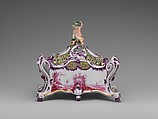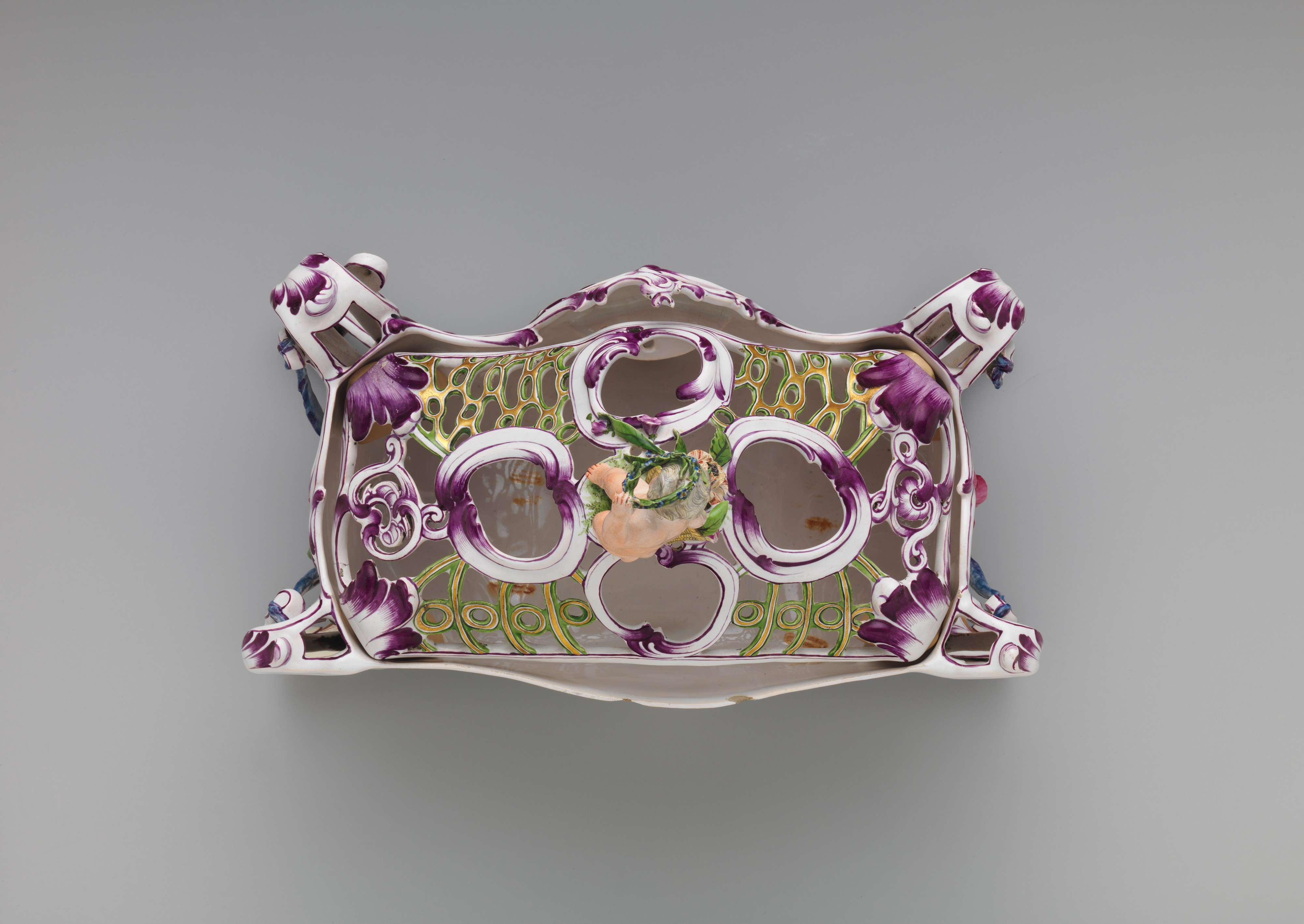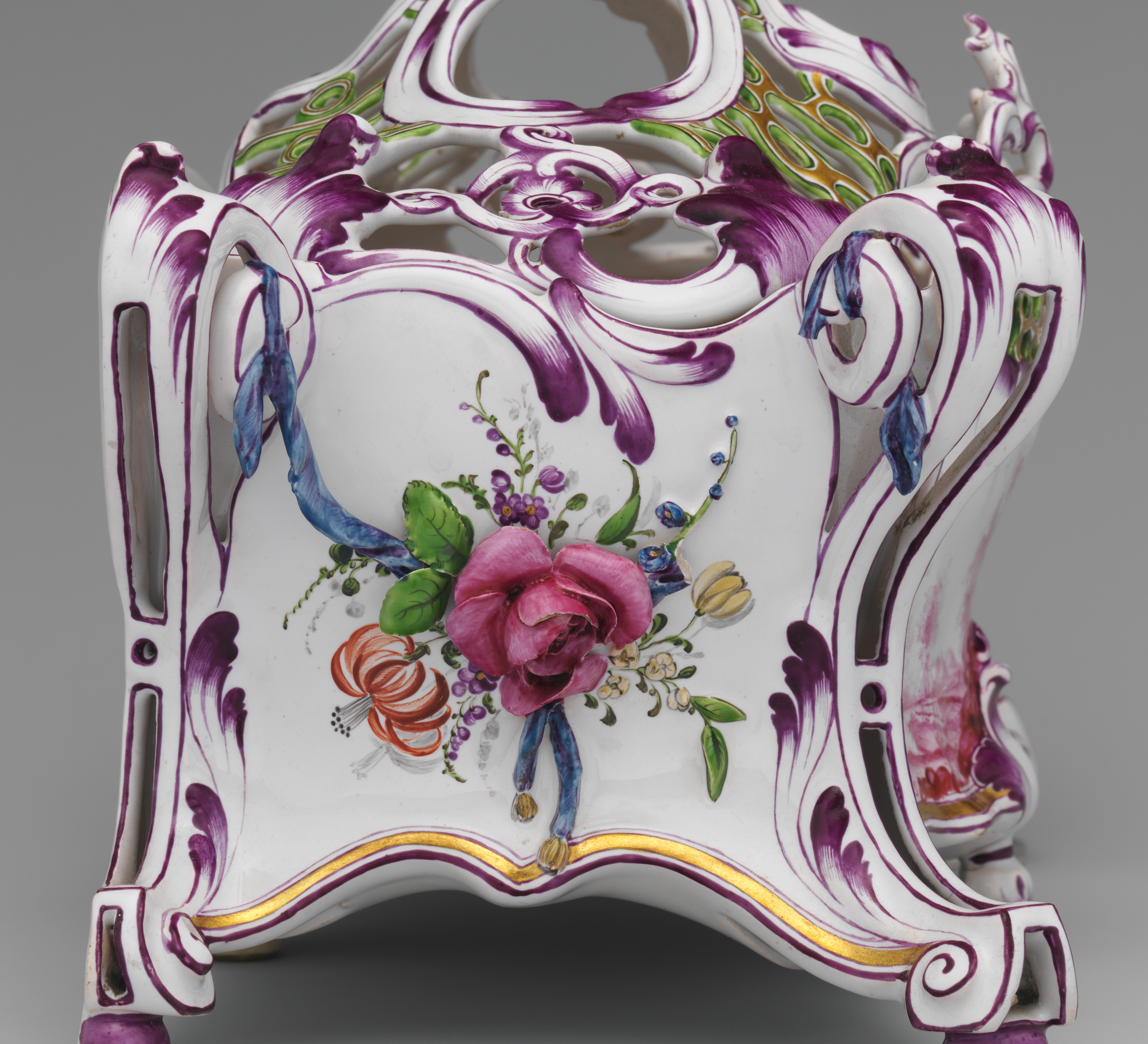Potpourri with cover
Factory Niderviller French
Period of Baron Jean-Louis de Beyerlé French
Niderviller, an area in the Lorraine region of France, came into prominence as a producer of enamel-decorated faience in the mid-eighteenth century when Baron Jean-Louis de Beyerlé purchased a factory there. Under Beyerlé and the chemist-painter François-Antoine Anstett, the factory produced an innovative range of models and colors in petit feu faience, or tin-glazed earthenware that was fired twice. Such forms were undoubtedly influenced by the factory’s parallel forays into hard-paste porcelain production from 1760 to 1765. This potpourri with cover exemplifies the Rococo aesthetic that dominated the factory in the middle of the eighteenth century. The rose-hued imaginary landscape on the base is evocative of the designs of Jean Pillement, while the asymmetrical scrolls and openwork on the cover is reminiscent of the ornament designs of Juste-Aurèle Meissonnier. In 1770, Beyerlé sold the factory to the Comte de Custine, who was guillotined during the French Revolution in 1793
Due to rights restrictions, this image cannot be enlarged, viewed at full screen, or downloaded.
This artwork is meant to be viewed from right to left. Scroll left to view more.





